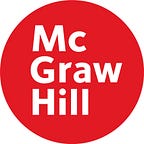How to Promote Reading and Literacy at Home
30+ Ways to Engage Children with Literature
Now more than ever, parents and caretakers are looking for flexible ways to encourage and sustain their child’s learning while at home. One of the simplest ways to incorporate learning into your child’s day is through reading.
No matter the reading level, making time for reading can develop and refine a learner’s comprehension, language acquisition, grammatical skills, phonological awareness, and overall interest in literature, even when they are not in school.
The first step is to be your child’s reading partner and role model. Simply picking up a book or newspaper and reading in front of your child will motivate them to do the same.
There are Endless At-Home Reading Opportunities for Children
Some ideas include:
- Reading anything you can get your hands on — books, e-books, graphic novels, magazines, comics, newspapers.
- Reading to another family member.
- Listening to an audiobook or story. Your local library may have a free digital collection of audiobooks you can download to your phone, tablet, or computer.
- Keeping a journal.
- Writing a poem, a story, or a drawing a comic or graphic novel.
- Making and labeling a map of home.
- Writing a play and acting it out.
- Keeping a list of the things you read, and writing a short summary of each.
- Creating a spelling list of words based on things found around the home.
- Creating a virtual book club with friends where you have the opportunity to get on a video call and discuss a common book.
- Watching a movie at home and then summarizing or reviewing it, or if it is based on a book — comparing the two.
Post-Reading Writing Prompts for Learners
- List five intriguing words you learned from the story and define each.
- List the characters and describe each of them.
- What genre is it? List three pieces of evidence from the story.
- Describe three cause/effect relationships found in the story.
- Describe five major events from the story in chronological order.
- What would the main character likely do if he/she visited your classroom? What questions would you ask?
- Did this book remind you of anything that has happened to you? What happened and how did you act?
- What changes would you see in the story if it had happened 200 years ago?
- Did the character remind you of yourself? Describe five ways you are similar and give specific examples from your life?
- When did the story take place? Use a Double Bubble or Venn Diagram to compare its time period to present-day.
- Write a newspaper article that tells the 5 W’s (who, what, where, when, and why) about your story. Be sure to think of an interesting title.
- Contrast the place where the story happened with where you live. Use a Double-Bubble or Venn Diagram.
- Choose a character. Rewrite a scene from the story from this character’s point of view.
- Choose an interesting character from your book. Think about what he/he likes and dislikes. What gift would you like to give to him or her? Design a greeting card to include with the gift that explains why you chose it.
- Begin a paragraph by completing the following sentence and then finishing the paragraph using five to seven sentences: “(insert name) should NOT read this book because…”
- Which character in this book would you choose to be your friend? Why?
- What was the most interesting or exciting part of the book? Give at least three reasons for your choice.
- Do you like the way the story ended? Why or why not? Write an alternate ending.
- Is the title of the book a good one or bad one? Why? Write an alternate title.
Blending Art with Literature
- List the places mentioned in the book. Describe one and draw a picture.
- Draw a picture of the main character. Describe him/her using evidence from the story.
- List the places in the book that are important. Pick one and draw a picture of what you think it would look like OR draw a map if there is more than one setting in the story.
- Make an 8-section comic strip with captions showing the main events of the story.
Other Engaging Activities for Learners After Reading
- Create a word search with ten keywords from the story.
- Research the author and list what other stories/books they have written.
- Tell in your own words about the beginning of the book in a 45-second speech.
- Write and act out for others a scene that tells about the character’s life.
- Create a commercial to advertise this book without giving away the entire story. Act it out for the class.
- Create a storyboard for a sequel to your book. Use the same characters.
What reading activities are you doing with your learners at home? Let us know in the comments below!
K-12 Product Support for Remote Learning:
Our Support for Remote Learning page provides a collection of resources that will help you navigate yourself with our digital products.
Program support for Out-of-School Learning:
